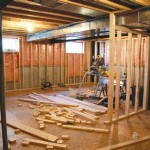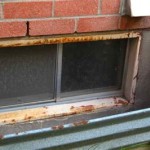How to Keep Basement Warm: Essential Aspects for a Cozy and Comfortable Space
A warm and inviting basement can be a valuable addition to any home, providing extra space for relaxation, entertainment, or even as a guest room. However, basements are often susceptible to cold and dampness due to their location below ground level. To ensure a comfortable and usable basement, it's essential to implement effective measures to keep it warm.
Here are the essential aspects to consider when keeping your basement warm:
1. Insulation
Insulation is crucial for preventing heat loss and maintaining a warm basement. Walls, ceilings, and floors should be well-insulated using materials such as fiberglass batts, cellulose, or spray foam. Proper insulation will trap heat inside the basement, reducing energy costs and creating a more comfortable environment.
2. Heating Source
A reliable heating source is necessary to warm up the basement. Options include:
- Forced-air furnace: Extends the ductwork from the main heating system to the basement.
- Baseboard heaters: Electric or hot water units installed along the walls that emit heat.
- Radiant floor heating: Embedded in the floor, providing even and efficient heating from the ground up.
3. Ventilation and Moisture Control
Proper ventilation is essential for preventing condensation and moisture buildup, which can lead to mold and mildew growth. Ensure there is adequate airflow by installing exhaust fans or a dehumidifier to remove excess moisture.
4. Air Sealing
Air sealing involves sealing gaps and cracks around windows, doors, and pipes to prevent cold air from entering the basement. Use caulk, weatherstripping, or expanding foam to seal any openings.
5. Window Treatments
Cover windows with thick curtains or blinds to minimize heat loss through the glass. Consider installing energy-efficient windows with double or triple glazing for added insulation.
6. Floor Coverings
Carpets and rugs provide insulation over concrete floors, making them warmer and more comfortable underfoot. Choose materials that are moisture-resistant to prevent mold growth.
7. Perimeter Drainage
In areas with high moisture levels, consider installing a perimeter drainage system around the foundation of the basement. This system helps divert water away from the walls, reducing dampness and keeping the basement dry.
By addressing these essential aspects, you can create a warm and comfortable basement that serves as a valuable and versatile space for your home. Remember to consult with a qualified contractor or heating specialist to determine the best solutions for your specific needs.

Keep Your Basement Warm In The Winter With These Tips H

Keep Your Basement Warm During Winter Crew Construction Restoration

How To Keep Your Basement Warm In The Winter Link Climatecare

10 Basement Heating Options To Keep You Warm Cozy In Winter

Cold Floors Over Basements How To Create A Warmer Floor Your Basement

6 Keys To Warm Up A Cold Basement Warmlyyours

Keep A Cold Basement Warm And Comfortable For Your Family Toronto Area

How To Keep Basement Warm In Winter Paragon Remodeling

8 Ways To Warm Up A Cold Basement Sheffield Homes Finished Basements And More

The Best Way To Heat A Basement And How Keep It Warmer







